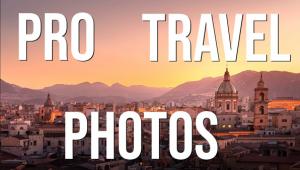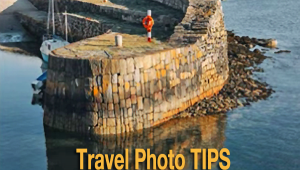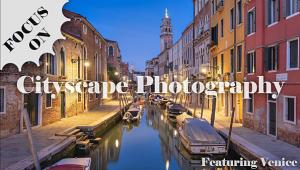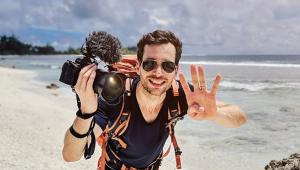Capturing Namibia: Tips for Photographing This Stunning, Isolated Landscape in Southwest Africa

All Photos © Chuck Graham
Namibia, located in Southwest Africa along the Atlantic Ocean, is one of the least populated countries in the world, second only to Mongolia. Its diversified, arid, and stark landscapes of desert, sand dunes, rugged coastline, mountains, and salt pans provide a home for some of the last nomadic tribes in Africa, and offer a unique blend of desert flora and fauna. For photographers, Namibia is the ideal destination in Africa to travel overland on a self-drive excursion to find the many photographic possibilities this desert country has to offer.
Namibia is twice the size of California, but with only two million people. Nearly half of Namibia is now under conservation management, the most in the world. Its 50,000-square-kilometer super park, Namib-Naukluft National Park, stretching for 1,000 miles from Angola to South Africa, is the third largest national park in Africa. This is one of Namibia’s most versatile conservation areas.
Further south, Namibia’s newly proclaimed Sperrgebiet National Park at 26,000 kilometers was inaugurated by the Namibian government in 2008. The park protects the ecology of the globally important Succulent Karoo. Home to 2,439 endemic plants, conservationists around the world have classified this area as one of the planet’s top 34 biodiversity hotspots.
Regardless of where your travels take you across Namibia, you’ll never be disappointed with the broad diversity of photographic opportunities in this land of endless openness.

Namib-Naukluft National Park
The great sand dunes of Namibia are arguably its most stunning natural wonder. The oldest desert in the world also boasts the highest sand dunes in the world. The tallest dunes are 1,000-feet tall, found in Sossusvlei’s monumentally mountainous dunes, and are sought by photographers from around the world. With their warm hues ranging from pale apricot to brick orange and deep red, the dunes are an impressively colorful desertscape in Namibia’s harsh, arid environment.
Also in this region is Dead Vlei, which means “Dead Valley.” Surrounded by sheer walls of sand, the only shade this mud-cracked pan offers is the ghostly camel thorn trees that have been standing dead for 500 years in the valley.
As magnificent as the dunes are, nothing accentuates their mass better than the amazing wildlife that has adapted to the desert habitat. Antelope such as the nimble springbok and majestic gemsbok are commonly seen browsing at the base of the dunes. The gemsbok is especially impressive because it never has to drink water. Its digestive tract is able to extract enough moisture from the vegetation it eats.
A trip in the Namib-Naukluft National Park isn’t complete without an early morning hot-air balloon ride over the mystical dunes. Floating 1,500 feet above the desert floor, this lofty perch offers a completely different perspective for the travel photographer and the vastness of the desert. Besides long shadows retreating across the deep troughs of the pink and orange dunes, there’s one other natural wonder that is difficult to ignore on the desert floor. Over the years, numerous theories ranging from the mundane to supernatural have swirled around the “fairy circles” found on the desert floor. However, it’s now assumed the sand termite is the creator of the many circles ringing the desert’s sweeping plain.

Skeleton Coast
A lonely, desolate, and barren stretch of coast, the Skeleton Coast name originally derived from the graveyard of whale and seal bones that once littered the shoreline during the whaling era in the 1800s. Now that those marine mammals are protected, today most of the Skeleton Coast is a flotsam of wave-battered hulls and splintered masts of shipwrecks that have run aground in dense fog and stormy seas on hidden reefs and dense sandbars and been snagged by offshore rocks. More than a thousand such vessels of various sizes are strewn along the coast, notably the Eduard Bohlen, Otavi, Dunedin Star, and Tong Taw.
The Skeleton Coast is also an excellent habitat for thousands of Cape fur seals that haul out along the entire stretch of rugged coastline. The best, most accessible place to photograph these raucous fur seals is at Cape Cross, where a boardwalk overlooking the massive rookery of 100,000 fur seals is the perfect platform to watch and photograph the ever-present drama that never wanes. Don’t be surprised if the boardwalk is occupied, too! Cape Cross is home to the world’s largest colony of breeding Cape fur seals.
There’s lots of squabbling within the rookeries; hungry pups nursing, fur seals bodysurfing the pounding shorebreak, and occasionally brown hyenas and black-backed jackals hunting unsuspecting pups on the periphery of the rookery.

Damaraland
Located in the north-central region of Namibia, Damaraland is loaded with photographic possibilities. Unique wildlife abounds. Elaborate Bushmen rock art and petroglyphs, thousands of years old, reveal stories of the hunt and fertility that are painted and engraved in hidden canyons and clusters of red rock piled throughout Damaraland.
The Etendeka Plateau in the foothills of the Grootberg massif is set among ancient lava flows of northern Damaraland. The craggy basalt has been slowly eroded over millennia, leaving scattered boulders lying upon dramatic flat-topped mountains. Atop those mountains are sweeping grasslands where the rare Hartmann’s mountain zebra still thrives. There are also herds of gemsbok, southern ground squirrels, flocks of colorful Lilian’s lovebirds, and pairs of kori bustards. Sunset is an optimum time to photograph on the plateau.
The spring-fed reddish brown rock of Twyfelfontein has been inhabited for 6,000 years, first by hunter-gatherers and later by Khoikhoi herders. Both ethnic groups used it as a place of worship and a site to conduct shamanist rituals. During their rituals at least 2,500 rock carvings have been created, as well as a few rock paintings. Displaying one of the largest concentrations of rock petroglyphs in Africa, UNESCO approved Twyfelfontein as Namibia’s first World Heritage Site in 2007. The best time to photograph here is in the morning and late afternoon.
Damaraland is the southernmost territory of the semi-nomadic pastoral Himba people. The Himba wear little clothing, but the women are famous for covering themselves with otjize, a mixture of butterfat and red ochre. It acts as a lotion and a sunscreen to protect their ebony skin against the sun. This unique blend gives their skin a beautiful reddish tint. This symbolizes the Himba’s idea of earth’s rich red color and the blood that symbolizes life. It also serves as a convenient bug repellent.

Etosha National Park
Deemed a national park in March 1907, Etosha is Africa’s oldest national park. Situated in northern Namibia, the massive 75-mile-long Etosha Pan is a great place for photographers to sit and wait for processions of wildlife to travel across the pan to several watering holes located along its periphery.
Endless drama unfolds around these watering holes where zebras, wildebeest, springbok, steenbok, and ostriches congregate while predators such as lions lie in wait. There are a couple of watering holes situated below the bluffs and overlooking the salt pan, convenient stages for photographers to anticipate the action before it transpires. Bring a pair of binoculars to scan the tall grasses for predators. You’ll also want a beanbag to steady a long lens. As afternoon winds pick up velocity, watch out for dust devils swirling across the Etosha Pan.
There are more watering holes situated in the maze of the scrubby woodland habitat adjacent to the extensive pan. A map can be attained at the visitor’s center detailing each watering hole. Patience is a key element photographing in Etosha, while allowing the wildlife to come to you. Expect guinea fowl, scaly-feathered finches, warthogs, zebras, giraffes, greater kudu, elephants, and predators like lions, hyenas, and possibly cheetahs lying low in the shade of the acacia woodland habitat. Eventually everything has to come for a drink.

Drive slowly on all the roads, not only for your own safety, but for the safety of the wildlife. You might miss something as well. The main road leading from the front gate to the visitor’s center can produce black-backed jackals, bat-eared foxes, and dik-dik, so always keep your camera at the ready.
To find out more about Namibia, go to namibiatourism.com.na. Rhino Africa, rhinoafrica.com, handled all my land arrangements for a three-week overland trip across Namibia. There wasn’t anything they couldn’t handle.
- Log in or register to post comments

















































